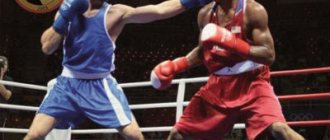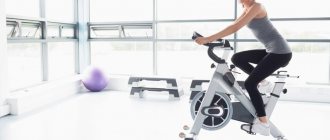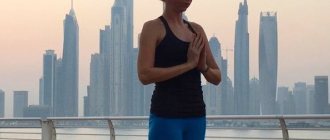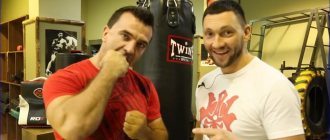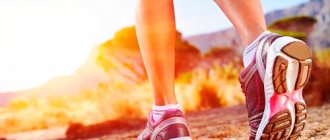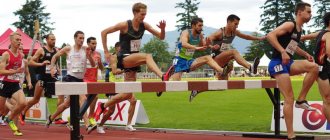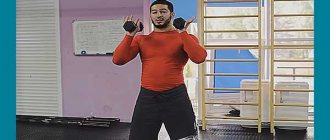Everyone knows that good flexibility and stretching is necessary in all sports. Martial arts are no exception, since it is thanks to good stretching that the maximum amplitude of movements and accuracy in performing kicks is achieved. Therefore, stretching exercises in martial arts should be present in the training of every athlete involved in karate, kickboxing or Muay Thai.
Kicks and kicks are an integral part of any type of martial arts. Therefore, it is very important to have a good stretch for kick fighting. To deliver a high kick, you need to improve and expand the capabilities of your body, increase its flexibility. In our article, we will give you practical tips for increasing your leg stretch for kicks. Please note that you can do leg kick stretches at home.
First, you need to understand that a full split is not necessary to throw knockout kicks. Your task is to develop leg strength, train a lot and choose the right trajectory for the kick. But you can’t do this without stretching at all.
Before starting each workout, it is necessary to warm up. It may consist of squats, sweeping movements of the legs forward and to the sides, etc. Then proceed directly to the stretching exercises for kicking:
- Sit on the floor, spread your legs as wide as possible. Your task is to lean forward and touch the floor with your chest. Then lean towards your right leg so that your body rests on it. Repeat the same with your left leg;
- Take a butterfly position (sitting on the floor, the soles of your feet pressed against each other and pulled as close to your pelvis as possible). It is necessary to press your elbows on your knees so that they are pressed to the floor;
- Sit on the floor, bend your right leg at the knee and place it behind your back. The left leg should be extended forward; in this position, reach your knee with your head. Repeat the same with the other leg.
These were static leg stretches for kicks. Now you can move on to dynamic stretching. Even if you feel tired, you need to find strength in yourself, otherwise you may not dream of knockout blows.
Dynamic leg stretching for kicks consists of high and sharp swings of the legs forward and upward, as well as to the sides. It is necessary to repeat kicks in different directions with each leg at least 20 times. Then perform 50 blows on the punching bag, but pay attention to the force of the blow, but to the correct trajectory and ease of application. It is especially recommended to perform these leg stretching exercises for men.
Stretching exercises in karate.
Stretching in karate is an essential part of training, which allows you to increase the range of motion in your joints. In addition, by performing stretching exercises in karate, you enhance the speed and strength of your muscles. Therefore, all famous karatekas recommend ending each workout with karate stretching exercises.
To get started, you need to understand a few basic principles of stretching:
- All movements must be performed smoothly;
- The muscles should be as relaxed as possible during stretching;
- Be as focused as possible; when performing movements, you need to think about what you are working on;
- It is necessary to complete the stretching with strength exercises to strengthen the ligaments;
- To achieve results in stretching, you need to work on it regularly;
- Don't forget to stretch your spine.
Menu
12 852
Everyone knows that stretching is very useful, and sometimes simply necessary for maintaining good health. But thanks to the school physical education curriculum and action films about martial artists, when talking about stretching, people often only remember about the splits. Although in everyday life it can be useful to few people. But a healthy back, good posture and a mobile lower back are the dreams of many.
The specific weight of resistance of tendons during stretching is only 10%, for ligaments it is much higher - 47%
The article “The Meaning and Mechanisms of Stretching” describes in great detail what stretching is from the point of view of anatomy and physiology, how it is beneficial for the body and how to do it correctly. The article is large and contains a lot of medical details, so here are the most interesting excerpts.
- There are 400−600 muscles in the human body. Their mass in men is 40-45% of the weight, in women - 30%. 55% of the mass of all muscles is located in the lower extremities.
- You need to understand the difference between elasticity and plasticity of the tissues of the human body. Elasticity is like a stiff spring: it takes a lot of force to stretch it, but when these forces are gone, it will quickly return to its original state. Plasticity is like plasticine: you stretch it and it retains the desired shape.
- Short-term stretching with great force promotes elastic, or reversible, deformation. Plastic, or permanent, elongation is promoted to a greater extent by longer stretching with less force.
- During stretching, the muscles do not become longer. They gradually get used to the loads, hurt less and do not tear when the loads increase.
- Muscle strength and flexibility always go together. Stretching allows you to achieve greater muscle strength. Active flexibility has a higher degree of correlation with the level of sports achievements (r = 0.81) than passive flexibility (r = 0.69). And when combined with strength exercises, the correlation reaches 0.91.
- Correct and moderate stretching has a beneficial effect on all organs and systems of the human body. Signals about tissue stretching on the way to the brain “pass” through the nerve ganglion of a certain vertebra, stimulating the activity of internal organs, the autonomic nerves of which pass through the same vertebra. As a result, organs improve their functioning.
- A person who practices stretching learns to reduce the effects of stress that his body experiences during exercise. This teaches you to cope with other irritants - first of all, everyday stress.
- Stretching reduces the likelihood of injury from accidents and physical activity.
- In response to the stretching process, the body first forces the stretched muscle to contract and try to return to its original position. The higher the tensile force, the stronger the neural stimulus for contraction. It is important to remain patient: the level of discomfort from a pulled muscle decreases slowly. If you suddenly stop the exercise, the effect will immediately be reset - you will have to start all over again. But if you endure the initial discomfort, the resistance to movement will decrease and the discomfort will gradually go away.
- Swing stretching is generally negative: sudden movements make it easier to injure tissues than to stretch them well. A scar appears at the site of injury. The scar does not stretch, but it breaks easily again.
- Passive stretching (with the help of a partner or a machine) is performed without stress on the practitioner. This is much more painful than active self-stretching and does not help maintain flexibility.
- Active stretching is static or slow dynamic stretching with conscious contraction of antagonist muscles (opposite to the one being stretched). With regular static stretching, adaptation to the load occurs and the pain effect is reduced to insignificant - stretching becomes pleasant.
- When actively stretching at the end of the exercise, it is enough to fix the element for 30 seconds. If the muscles are very stiff or the exercise has not yet been mastered correctly, the fixation should last 60 seconds. But for the effect to transfer to the internal organs, you need to stay in the pose for at least 3 minutes.
- The increased plasticity of the muscle achieved by active stretching is the most stable. Often, several or even one intensive session per month is enough to maintain the achieved flexibility.
- Flexibility is not general, but depends on the specific joint and the age of the person.
- Most of the muscles and ligaments of the legs, pelvis, and a significant part of the back can be effectively stretched while standing on your feet - the legs are strong levers.
- Due to the increased volume of intervertebral discs, it is better not to do spinal exercises in the first hour and a half after waking up.
- The optimal frequency of stretching exercises per week to improve flexibility is 2-4 times.
- Static stretching is effective at the end of a workout, and after each strength exercise, to improve blood circulation in the working muscles.
“Sun Greeting” is one of the simplest and most effective complexes. Good stretch for the shoulders, chest and lower back
PS
After 40, absolutely everyone has problems with the spine and joints: with age, tissue elasticity decreases and the accumulated negative effects of a sedentary lifestyle appear. But the damage can always be controlled. Regular stretching helps keep muscles, ligaments and tendons in good shape and improves the health of joint cartilage.
The problem is that it is very difficult to train on your own on a regular basis - a noticeable effect will only appear after many months. You can also make a lot of mistakes and get injured. Therefore, you need to stretch under the guidance of a specialist.
A great option for beginners is classic hatha yoga. This is a holistic system that has been developing for more than 2000 years. If you want to try, I recommend a good master - I’ve been working with her for 5 years.
Yoga teaches us how to heal what cannot be tolerated and how to tolerate what cannot be healed
More about physical training:
- Correct plank in 2 minutes
- Universal exercise for strong abs
Stretching exercises in Muay Thai.
Stretching for Muay Thai and other martial arts must be done after a thorough warm-up, for example, after a 3-5 km cross-country run. The muscles should be warmed up, then it will be easy for you to do the splits and perform other stretching exercises in Muay Thai.
Here are some classic stretches for boxers:
- Rotation of the feet in both directions;
- Rotation of the knees in both directions. Please note that the exercise should be performed in a shallow squat;
- Bent over torso rotation;
- In a sitting position, touch the toes of your straightened legs with your palms. You can ask someone to help you to perform the exercise with a greater amplitude;
- Squat down on one knee, straighten the other leg and move it to the side, perform low rolls from foot to foot at least 10 times;
- One straight leg is in front, the other is behind. Gradually lower yourself lower and secure yourself with your hands. You won't be able to get down to the floor right away. Your task is to gradually reduce the distance, increasing the stretch.
Do not make sudden movements!
Most martial arts athletes tend to stretch too vigorously and abruptly, which greatly reduces the value of these exercises. Properly performed stretches must be done slowly and smoothly, otherwise you risk losing much of the benefit you could gain from them.
Since it is very easy to injure yourself by excessively increasing the range of motion of a joint or muscle, nature has provided our body with two protective mechanisms. Both of them are represented by special types of neurons (nerve cells). One type is activated when a muscle is overstretched and sends pain signals to the brain. The second type of neuron is part of a defense mechanism called the stretch reflex. When a stretch is performed too quickly, the brain sends signals to reflexively contract the stretched muscle, acting as a shock absorber that slows and then stops the stretch completely to protect the muscle from damage. This is to some extent similar to how the thigh muscles reflexively contract, absorbing the shock when landing after jumping to the floor from a bench or some other elevation.
If a muscle group is suddenly stretched, the stretch reflex is immediately activated. and the neurons serving this muscle group send signals to the brain asking it to stop stretching. So while it may seem that sharp movements can increase flexibility or lead to faster results, such stretches, on the contrary, have exactly the opposite effect. Due to the stretch reflex, the stretched muscles actually contract, preventing them from reaching their fully extended state. To fully stretch a muscle or joint, you must do so slowly and carefully to prevent the stretch reflex from occurring. In other words, just take your time when doing the stretch. Slowly stretch for 30-40 seconds until you begin to feel slight discomfort in the muscle being stretched. This is the maximum point to which you should stretch the muscle. If you try to stretch it beyond this pain threshold, you will actually begin to stretch the thinnest muscle tissue, thereby damaging the muscle. You now have enough physiological information to understand the mechanics of proper stretching. Regardless of which exercise you choose, pay close attention to it. so that the process of each stretch takes you from 30 to 40 seconds. Then, having reached the pain threshold, slightly weaken the stretch until the pain disappears. Fix the muscle in this position for 20-30 seconds, trying to eventually increase the duration of the exercise to 1-2 minutes. Breathing should be shallow, albeit in a normal rhythm, when you are in the position of maximum stretch. Finally, once you come out of the stretch, try again after a minute or move on to another stretching exercise. To get the most benefit from a flexibility program, you must clearly define your own pain-free stretch range. Only by being in a stretching position in this range will you be able to get the most out of your flexibility program.
Be careful!
When starting a stretching program, regardless of your current physical condition, you should perform the exercises very slowly, as there is always a danger of damaging muscles or experiencing severe pain if these exercises are performed without proper care.
Tips for beginners
Beginners during their first workouts should not bring the stretch to the pain threshold and hold it for more than 20 seconds. They should also perform only one repetition of the stretch for each muscle group. From this starting point, you can gradually and slowly increase the duration of each stretch (bringing it up to one minute) and the load of each stretch (approaching the upper limits of the stretch zone, close to the pain threshold). Once you reach this level, you can either add repetitions to each stretch (that is, perform a second repetition of 20 seconds, gradually increasing it to one minute), or add another stretching exercise for the same body part (be sure to start with a duration of 20 seconds). ). From the stories of Bruce Lee's students, I concluded that Lee himself performed these exercises in the interval from 30 seconds to one minute.
The benefits and harms of stretching
Benefits of stretching:
- Helps to better bear loads. Tight, inelastic muscles are easier to injure. Stretching relieves muscle tension, improves blood circulation, and protects against muscle and ligament tears.
- Recovery after training. Static stretching after a core workout speeds up recovery, relieves stiffness, and reduces post-workout pain.
- Recovery after injury. Stretching elements are used in sports medicine for rehabilitation after muscle and ligament injuries. For example, to restore the Achilles after an injury, stretching the ankle is done; for knee injuries, stretching the thigh muscles is useful.
Read: Exercises for the Achilles: prevention and recovery .
Harm from stretching:
- Static stretching before exercise worsens performance and does not prevent injury
Source: Abigail Keenan on Unsplash
Stretching the foot arches[edit | edit code]
Foot Arch Stretching
What are you stretching:
Insertion of externally rotating foot muscles (plantaris, soleus, gastrocnemius, flexor digitorum longus, tibialis posterior and anterior, and flexor hallucis longus)
What are you abbreviating:
Insertion of externally rotating foot muscles (peroneus longus, peroneus brevis, peroneus triangularis, and extensor digitorum longus)
How many times to repeat:
10 per side
How long to hold:
2 seconds
Sit on a chair or on the edge of a table. The legs hang freely from the knee down. Raise the foot of the leg you will be working with onto the surface of a chair or table. Stabilize your position by grabbing your heel on the opposite side. With your other hand, grab your foot at the base of your toes. The hand touches the outside of the first leg. Rotate your foot outward and upward. At the end of the movement, help yourself a little with your hand.
One head it's good, but two better…
Assistant, sit next to the athlete. Let him do all the work, but give him a little help at the end. Hold your heel in one hand and hold your foot with your other hand. Rotate slightly outward and hold for 2 seconds.
| Left-hand side | Right side | ||||
| Range | Position on the dial | Range of motion degree | Range | Position on the dial | Range of motion degree |
| Red range Too tight | 3.00-2.50 | 0°-5° | Red range Too tight | 9.00-9.10 | 0°-5° |
| Yellow range Normal | 2.50-2.40 | 5°-10° | Yellow range Fine | 9.10-9.20 | 5°-10° |
| Green range Athlete's norm | 2.40-2.30 | 10°-15° | Green range Athlete's norm | 9.20-9.30 | 10°-15° |
| Blue range Hypermobility | 2.30-2.20 | 15°-20 | Blue range Hypermobility | 9.30-9.40 | 15-20 |
Toe extensor stretch[edit | edit code]
Toe Extensor Stretch
What you stretch:
Muscles on the top of the toes that help them bend upward (extensor toes longus and brevis)
What are you abbreviating:
Muscles on the bottom of the toes that help them bend down (flexor toes longus and brevis)
How many times to repeat:
10 per side
How long to hold:
2 seconds
Sit on a flat surface with your legs extended forward. Bend the leg you will be working with at the knee at an angle of 90°, and place your foot on the surface on which you are sitting. Grasp the bottom of the foot you are working with both hands. Keeping your heel flat, lift your foot and flex your toes. Use your hand to apply pressure on your fingers to help bend them more. A modification of this exercise can be to curl each finger separately.
One head it's good, but two better…
Assistant, sit next to the athlete. Let him do all the work, but give him a little help at the end. Help bend your fingers all together or one at a time and hold for 2 seconds.
| Range | Position on the dial | Range of motion degree |
| Red range Too tight | 12.00-12.30 | 0°-15° |
| Yellow range Normal | 12.30-1.00 | 15-30 |
| Green range Athlete's norm | 1.00-1.20 | 30°-40° |
| Blue range Hypermobility | 1.20-1.30 | 40-60° |
Secret four, how to do the splits at home
Firstly, take care of furniture and dishes. Your kicking is bad for your mother's dinnerware. Provide yourself with free space. It would also be nice to allocate a place near the wall so that your legs and arms do not rest on chairs and sofas.
Use a table, chair and books for your exercises, but do not break them. Be more careful. It is better to use a soft mat and pillows to prevent knee pain.
When climbing onto two chairs, remember that they may fall. And with them you and the barbell. Pay attention to this. And they can simply fall apart.
Stretching the pronator muscles of the foot[edit | edit code]
Foot Pronator Stretch
What are you stretching:
Insertion of externally rotating foot muscles (peroneus longus, peroneus brevis, peroneus triangularis, and extensor digitorum longus)
What are you abbreviating:
Insertion of externally rotating foot muscles (plantaris, soleus, gastrocnemius, flexor digitorum longus, tibialis posterior and anterior, and flexor hallucis longus)
How many times to repeat:
10 per side
How long to hold:
2 seconds
Sit on a chair or on the edge of a table. The legs hang freely from the knee down. Raise the foot of the leg you will be working with onto the surface of a chair or table. Stabilize your position by grabbing your heel on the opposite side. With your other hand, grab your foot at the base of your toes. The hand touches the inside of the second leg. Rotate your foot inward and upward. At the end of the movement, help yourself a little with your hand.
One head it's good, but two better…
Assistant, sit next to the athlete. Let him do all the work, but give him a little help at the end. Hold your heel in one hand and hold your foot with your other hand. Rotate slightly inward and hold for 2 seconds.
| Right side | Left-hand side | ||||
| Range | Position on the dial | Range of motion degree | Range | Position on the dial | Range of motion degree |
| Red range Too tight | 3.00-2.50 | 0-5 | Red range Too tight | 9.00-9.10 | 0°-5° |
| Yellow range Normal | 2.50-2.40 | 5-10° | Yellow range Normal | 9.10-9.20 | 5-10° |
| Green range Athlete's norm | 2.40-2.30 | 10-15 | Green range Athlete's norm | 9.20-9.30 | 10-15° |
| Blue range Hypermobility | 2.30-2.20 | 15°-20 | Blue range Hypermobility | 9.30-9.40 | 15-20 |
Stretching the inverting ankle muscles[edit | edit code]
Inverter Ankle Stretch
What do you stretch:
Ankle muscles (posterior and anterior tibialis)
What are you abbreviating:
Ankle (long and short fibular and fibular triangular, as well as long extensor digitorum)
How many times to repeat:
10 per side
How long to hold:
2 seconds
Sit on a chair or on the edge of a table. Lift the foot of the leg you will be working on and place it on the surface you are sitting on, in front of your buttock. Grab your foot with the hand on the side of your other leg. With your other hand, apply light pressure to the knee of your first leg to stabilize it. From the ankle, rotate your foot outward from the center of your body. You can help a little with your hand at the end of the exercise.
One head it's good, but two better…
Assistant, sit next to the athlete. Let him do all the work, but give him a little help at the end. Grasp the middle of your foot with both hands. Rotate your foot slightly outward and hold for two seconds.
| Left-hand side | Right side | ||||
| Range | Position on the dial | Range of motion degree | Range | Position on the dial | Range of motion degree |
| Red range Too tight | 3.00-2.50 | 0-5 | Red range Too tight | 9.00-9.10 | 0°-5° |
| Yellow range Normal | 2.50-2.40 | 5°-10° | Yellow range Normal | 9.10-9.20 | 5°-10° |
| Green range Athlete's norm | 2.40-2.30 | 10°-15° | Green range Athlete's norm | 9.20-9.30 | 10°-15° |
| Blue range Hypermobility | 2.30-2.00 | 15°-30° | Blue range Hypermobility | 9.30-10.00 | 15-30° |
How do the splits
Today I will reveal to you a person whose book helped me increase flexibility and mobility in my joints. I consider him one of the most knowledgeable teachers in stretching.
He is one of the pioneers of tricking, I learned about him from videos on YouTube:
And then I found and read him trickstutorials.com Now he has a new website, but he started writing his book on stretching there. He took most of the ideas from other authors and tested them on himself.
His name is John Call, but most people know him as Jujimufu
Over time, John increasingly moved away from tricking into bodybuilding. But I didn’t lose my stretch. Now his YouTube has changed. He matured, grew a beard and a mountain of muscles. He still jumps well, and his stretch is enviable:
His book and ideas helped me put together my stretching system. At that time, he posted chapters of the book for free on his website.
You can find the latest version of stretching in English here: legendaryflexibility.com for $25
Partnered Lower Back Stretch
Emphasis: Lower back muscles. Starting position: Sit facing your partner. Spread your legs apart so that your partner presses the soles of their feet toward your ankles. Lean forward and clasp your hands tightly with your partner.
Stretch position: One person pulls the other person's arms toward him or leans back, forcing the other person to reach forward, gently stretching all the upper and lower back muscles. Then the partners change roles, performing actions in the reverse order.
Lateral stretch Emphasis: The lateral muscles of the torso are stretched. Starting position: Stand straight, look in front of you, legs straight, feet together, arms at your sides. Stretch position: Raising your right arm up and fully straightening it without bending your legs, bend as far to the left as possible, trying to raise your right straight arm as far behind your head as possible, perform this exercise several times, alternating between leaning to the right and left.
Posterior stretch Focus: Back and front thigh muscles. Starting position: Stand straight, looking in front of you, legs straight, feet together, arms extended up and close to your head.
Stretch Position: Keeping your weight on your left leg, step your right leg forward without lifting your heel off the ground. Without bending both legs, lean back at the waist as far as possible. Return to an upright position and place your right foot next to your left, keeping your arms extended above your head. Perform the exercise several times, alternately placing your left and right leg forward.
Front and back stretches Focus: Back muscles and leg tendons. Starting position: Stand straight, looking in front of you, legs straight, feet together, arms extended up above your head. Stretch Position: Keeping your legs straight, bend forward at the waist until your head touches your knees, extending your arms out to the sides so they are at a 90-degree angle to your torso. Return to a vertical position, keeping your legs straight, and bend back at the waist as far as possible, then return to the vertical position again. Do the exercise several times.
Hamstring strain
Emphasis: Muscles of the back of the thigh.
Starting Position: In a basic hamstring stretch, keep your legs together, arms raised overhead, and hands clasped. Stretch Position: Keeping your legs straight, lean forward and touch your hands to your feet. After repeating the exercise in this position, your torso will touch your thighs. Variations: There are three variations of this exercise. In the first option, your legs are spread apart and you lean forward and touch each leg separately. In the second option, you lean slightly to the side and touch the ankle of each leg with both hands, while carefully lowering your torso.
In the third option, from a vertical position, bend forward at the waist until your chin is opposite your shins.
Toe flexor stretch[edit | edit code]
Toe Flexor Stretch
What you stretch:
Muscles on the bottom of the toes that help them bend down (flexor toes longus and brevis)
What are you abbreviating:
Muscles on the top of the toes that help them bend upward (extensor toes longus and brevis)
How many times to repeat:
10 on each side
How long to hold:
2 seconds
Sit on a flat surface with your legs extended forward. Bend the leg you will be working with at the knee at an angle of 90°, and place your foot on the surface on which you are sitting. Grasp the bottom of the foot you are working with both hands. Keeping your heel on the surface, lift your foot and forcefully open your toes so that they point in your direction. Use your hand to apply pressure on your fingers to help extend them further. A modification of this exercise can be to extend each finger separately.
One head it's good, but two better…
Assistant, sit next to the athlete. Let him do all the work, but give him a little help at the end. Help straighten your fingers all together or one at a time and hold for 2 seconds.
| Range | Position on the dial | Range of motion degree |
| Red range Too tight | 12.00-11.00 | 0-З0 |
| Yellow range Normal | 11.00-10.30 | 30°-45° |
| Green range Athlete's norm | 10.30-10.20 | 45°-55° |
| Blue range Hypermobility | 10.20-10.00 | 55°-60° |
